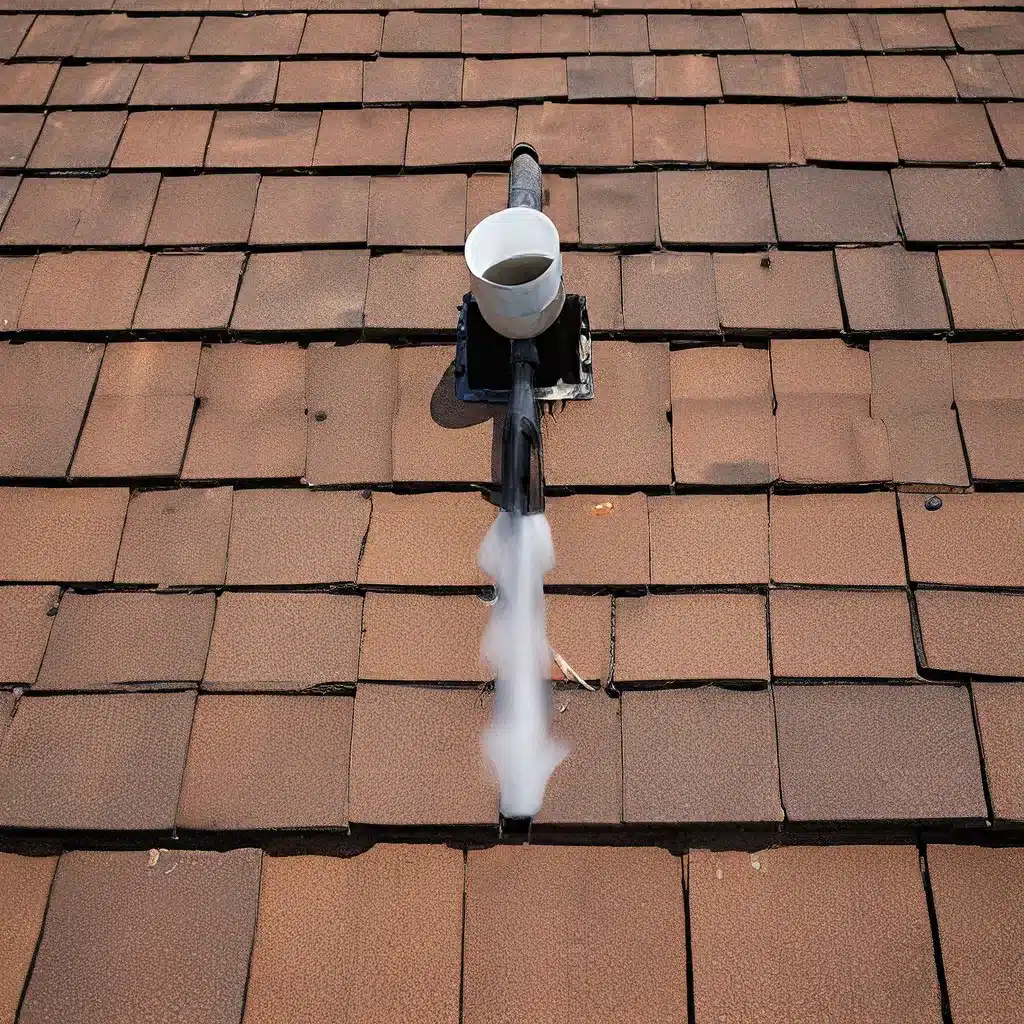
As a proud homeowner, I know how frustrating it can be to deal with a pesky roof leak. It’s like trying to play a never-ending game of hide-and-seek with the culprit, except the stakes are much higher – your home’s structural integrity and your wallet’s well-being. But fear not, my fellow roofing warriors, for I’m here to share my hard-earned knowledge on the 6 most common causes of roof leaks and how to tackle them head-on.
Cause #1: Damaged or Worn Roof Flashing
Roof flashing is the unsung hero of your roofing system, quietly guarding against water intrusion around chimneys, vents, and other roof penetrations. But over time, this metal or plastic barrier can become cracked, corroded, or simply worn out, leaving your home vulnerable to leaks.
The solution? Carefully inspect your roof’s flashing and replace any damaged sections. If you’re not comfortable tackling this task yourself, don’t hesitate to call in a professional roofing contractor – they’ll have the expertise to ensure your flashing is in tip-top shape.
Cause #2: Clogged Gutters and Downspouts
It’s easy to forget about those gutters and downspouts, but they play a crucial role in keeping your roof healthy. When they become clogged with leaves, twigs, and other debris, water can’t flow freely, leading to backups and potential leaks.
The fix? Make it a habit to clean your gutters and downspouts regularly – at least once or twice a year. And if you really want to stay ahead of the game, consider installing gutter guards to minimize the amount of maintenance required.
Cause #3: Broken or Missing Shingles
Your roof shingles are like the armor protecting your home from the elements, but they can become cracked, curled, or even blown off during severe weather events. When these shingles are compromised, water has a clear path to seep into your home.
To address this issue, carefully inspect your roof and replace any damaged or missing shingles as soon as possible. If you notice a larger area of concern, it might be time to consider a full roof replacement.
Cause #4: Improper Roof Ventilation
Proper ventilation is crucial for maintaining a healthy roof, but if it’s not designed or installed correctly, it can actually contribute to the problem. Inadequate ventilation can lead to moisture buildup, which can eventually cause leaks and other damage.
To improve your roof’s ventilation, consider adding additional vents or upgrading your existing ones. This is a job best left to the professionals, so don’t hesitate to reach out to a roofing contractor for guidance.
Cause #5: Roof Age and Wear
As with any part of your home, your roof has a finite lifespan. Over time, the materials can become weathered, worn, and more susceptible to leaks, no matter how well you maintain them. This is especially true for older roofs made of asphalt shingles, which typically last around 15-20 years.
If your roof is approaching the end of its lifespan, it might be time to start considering a replacement. While it’s not the most exciting project, a new roof can provide you with peace of mind and potentially increase the value of your home.
Cause #6: Roof Penetrations
Your roof is full of penetrations, such as vents, chimneys, and skylights, which are all potential entry points for water. If these areas are not properly sealed or flashed, they can become weak spots that allow leaks to develop.
To address this issue, carefully inspect all roof penetrations and ensure they are properly sealed and flashed. If you notice any signs of damage or deterioration, don’t hesitate to call in a professional for repairs.
Now, I know what you’re thinking – with all these potential causes, how am I ever going to keep my roof in tip-top shape? Well, my friend, the key is to be proactive and vigilant. Regularly inspect your roof, address any issues you find, and don’t be afraid to enlist the help of a professional roofing contractor when needed.
Remember, a little prevention can go a long way in protecting your home from the dreaded roof leak. So, grab your binoculars, don your best detective hat, and let’s get to work – your roof (and your wallet) will thank you.